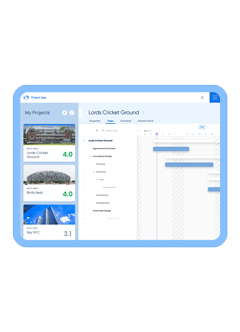The range of concepts a Project Manager of professional services should know spans both technical and commercial aspects of project delivery. The commercial side tends to be the least understood, but is a key area to master in order to drive successful project outcomes.
As a Project Manager, your focus is to manage and deliver projects that must not only meet client expectations, but must also meet internal expectations set by your firm’s financial, operational, and technical guidelines – no pressure, right?
With this incredible amount of responsibility, comes a ton of project management concepts you constantly have to keep up with – which can get pretty time consuming, especially if you have a technical background and not much formal business training.
Tapping into two decades of experience in the business of design, I’ve rounded up the top three concepts every Project Manager in the architecture, engineering, and environmental consulting (AEC) industry needs to know in order to drive their projects to commercial success.
Create a Winnable Game
Let’s start with the basics, which Project Managers across all industries must stay rooted in to be effective at their jobs. By definition, a project is a temporary endeavor that is meant to end. Or in other words, when a project never seems to have a finish line – it’s one that’s been poorly managed!
Another fundamental aspect about projects is that they are inherently constrained. And that’s not only from a scheduling perspective: in fact, the concept of the Project Management Triangle shows how the scope, schedule, and budget of a project forms the boundaries around the quality that can be expected once it’s finished.
In delivering projects, one of the essential responsibilities you have as a Project Manager is to set up a project for success by embracing these constraints. That means, to drive a project forward, you must constantly measure and balance the project’s scope, schedule, and budget performance.
For example, you may find that you need to go back to the client with a change order to get some additional room in the budget. Or, you may need to look for ways to reallocate resources to remove bottlenecks and get the schedule back on track. Either way, you always need to stay on top of each constraint to make sure your project is in line to meet the expectations of all three – thus, creating a winnable game.
Successful outcomes are not just determined during project delivery, though – they are also ensured in large part before the project even begins. Creating a winnable game starts with organizing your project scope in a thoughtful manner, which reflects the way the project will be executed and controlled. You must do this by creating a cohesive, well-developed work breakdown structure (WBS).
To have a good WBS, you need to create tasks, as these are the building blocks for your WBS. Each task represents discrete items of work in an often-hierarchical manner, where parent tasks group together sets of related tasks, ultimately creating specific work packages.
As a Project Manager, you want to develop a project WBS into these component work packages, so they can be tracked and managed in the context of the three essential boundaries. Breaking it down like this, and controlling each task with these boundaries in mind, is a critical step in setting your project up for success.
- Work Breakdown Structure
- A deliverable-oriented, hierarchical composition of the work to be executed by the project team.
Time is Money
We’ve just focused on the scope element of the Project Management Triangle – now let’s explore the other two elements: schedule and budget.
In a professional services environment, projects take on an added commercial dimension as time is not just figuratively, but literally, money. AEC firms make (or lose) money based on the time they spend delivering projects, so, the more effective you are with your project scheduling, the more efficient you will be in completing your projects.
One of the most important ways to monitor the intersection of time and money on your projects is with Earned Value Management (EVM).
As a Project Manager, you need to create performance metrics that determine the profitability of a project. And part of this is being able to proactively identify project trends and issues before they happen, so you can take corrective action. The core EVM metrics you need to track include the following:
- Planned Value: The amount of income a firm expects to earn for the work performed. In the context of projects, Planned Revenue is another way to express this metric, as it represents the revenue a project is expected to earn through completion.
- Earned Value: The amount of work executed against the budget that is reported as revenue. For AEC firms, this is more suitably termed Earned Revenue, as it represents the revenue a project earns as work is performed.
- Actual Cost: The market (or retail) value of cost a project incurs as work is performed. This metric allows consultancies to compare how much effort has been expended on a project in relation to the Planned Revenue and Earned Revenue on the project.
Once you’ve evaluated these, a great tool to use is the S-Curve graph. This model brings these metrics together and charts the path that your project has traveled, where it’s currently at, and where it’s heading. By using this model to display cumulative EVM factors against time, it provides a simple, yet insightful, visual that can help you optimize the trajectory of your projects.
- S-Curve Graph
- A model that displays cumulative EVM factors (planned value, earned value, and actual cost) plotted against time. This model describes the growth of one variable in terms of another variable over time.
Harness EVM
By understanding these EVM concepts, you have not only positioned yourself to gain more insight into the status of your projects, but you are also now better equipped to take quick action.
In addition to tracking this information, as a Project Manager, you should always be communicating with your project team to understand the progress of specific tasks, as this will give you a better idea of how far along a project is. When talking to your team, it’s important to collect the status of specific metrics to help you determine the health of a project and drive its performance.
To get started, you’ll want to take a look at percent complete. You will use this as a means of calculating an updated earned value (also known as revenue) position of your project.
Once you have this value, you can then analyze current project performance from a financial perspective. There are two calculations you need to analyze this: project variance and being over, or under, budget.
- Percent Complete
- The progress of an activity or other element of the project structure plan. Expressed a as a percentage, the calculation is Earned Value divided by Budget.
Earned Value Budget
- Variance
- A calculation of Earned Revenue minus Actual Effort. This calculates if the amount earned is greater or less than the effort expended to complete a task.
To assess variance, you’ll need to determine the difference between the project’s revenue position and the project’s effort position. Depending on what your result is for variance, you will be either over, on, or under budget. To be over budget means you have a negative variance, to be on budget means you have no variance, and to be under budget means you have a positive variance – these last two scenarios are what you want for your projects!
You can also analyze the current project performance from a scheduling perspective by looking at the difference between a project’s revenue position and its planned revenue position at the same point in time. In this case, you can either be ahead, on, or behind schedule. To be ahead of schedule means your project’s revenue position is greater than its corresponding planned revenue position, and vice versa if your project is behind schedule.
Beyond these ways to assess the current position of your project, you can leverage budget, effort, and revenue to forecast where your project is headed.
To do this, you’ll need to calculate Effort at Completion (EAC) and Variance at Completion (VAC). The former is the amount of money you think you will spend by the end of a project, while the latter is how this compares to the project budget.
It’s important to consider both in tandem – having your EAC is only one piece of the picture, but by comparing it to your budget via VAC, you now have a complete look ahead into where your project is headed.
As a Project Manager, you should be measuring and analyzing every one of these measurements. Each allows you to assess and improve on the three parts of the Project Management Triangle – which is the whole point. Meeting these expectations and keeping these values in check means you can deliver more high-quality projects with more successful outcomes.
- Effort at Completion
- The estimated value of work expended to complete a task or project.
- Variance at Completion
- The difference between Planned Revenue and Effort at Completion forecasts where a project will end up in comparison to its overall budget.
Conclusion
Well, there you have it. These are the fundamental business concepts you need in today’s world of project management in the AEC industry. Keyword: fundamental. Meaning there are many – and I mean many – terms and concepts that Project Managers ought to know, so consider this just your starting point. And ideally you have a Project Accountant at your side, staying on top of related aspects of project success.
And although you’ve reached the end of The Business of Design blog series, that doesn’t mean your journey should end. There’s still so much to learn!
Get ready to expand your knowledge when you download The Ultimate ERP Glossary for AEC Firms. In this glossary, you’ll find a comprehensive list that goes well beyond project management terms. And by comprehensive, I’m talking about 150 AEC industry terms that cover the entire project lifecycle.
So, to continue learning, click the link below and get your free copy today!










